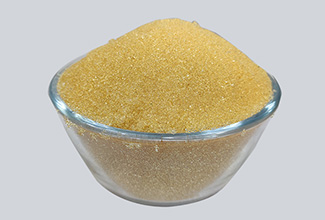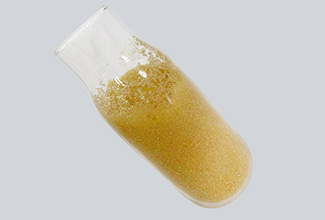Ultra-pure Water Preparation Method
Pure and ultrapure water is commonly used in laboratories for configuration and cleaning. There are many ways to produce pure water. The early methods include distilled water production and the popular ultrapure water mechanism water production. Let me introduce them to you in detail:
1. Distilled water:
A common type of pure water used in laboratories. Although the equipment is cheap, it is extremely energy and water consuming, and the speed is slow, and its application is gradually decreasing. Distilled water can remove most of the contaminants found in tap water, but it cannot remove volatile contaminants such as carbon dioxide, ammonia, silica and some organic matter. Fresh distilled water is sterile, but bacteria can easily multiply after storage, and the storage container is also very specific. If it is a non-inert substance, ions and plastics from the container will precipitate and cause secondary contamination.
2. Deionised water:
The use of Ion Exchange Resin to remove anions and cations in water is a traditional process for producing pure water that has been used for a long time. After treatment, ultrapure water of a certain purity can be obtained, but there is still soluble organic matter in the water which can contaminate the ion exchange column and reduce its effectiveness. Deionised water is also susceptible to bacterial growth after storage.
3. Reverse osmosis water:
The principle of its production is that water molecules pass through the reverse osmosis membrane under pressure to become pure water, and impurities in the water are trapped and discharged by the reverse osmosis membrane. Reverse osmosis water overcomes many of the shortcomings of distilled water and deionised water. Reverse osmosis technology can effectively remove impurities such as dissolved salts, colloids, bacteria, viruses, bacterial endotoxins and most organic matter in water.
4. Ultrapure water:
The standard is that the water resistivity is 18.2MΩ-cm. The new process for producing ultrapure water often uses reverse osmosis plus ion exchange mixed bed (COMCESSS MR 120) or reverse osmosis plus electro-deionization (EDI) to produce it, and the latter is more economical and environmentally friendly than the former.
Among the common water production methods mentioned above, traditional water distiller can only prepare the first type of water, while ultrapure water machine can prepare the above four types of water, and the water quality is much more stable than that of water distiller, and it is more suitable for laboratory use.
1. Distilled water:
A common type of pure water used in laboratories. Although the equipment is cheap, it is extremely energy and water consuming, and the speed is slow, and its application is gradually decreasing. Distilled water can remove most of the contaminants found in tap water, but it cannot remove volatile contaminants such as carbon dioxide, ammonia, silica and some organic matter. Fresh distilled water is sterile, but bacteria can easily multiply after storage, and the storage container is also very specific. If it is a non-inert substance, ions and plastics from the container will precipitate and cause secondary contamination.
2. Deionised water:
The use of Ion Exchange Resin to remove anions and cations in water is a traditional process for producing pure water that has been used for a long time. After treatment, ultrapure water of a certain purity can be obtained, but there is still soluble organic matter in the water which can contaminate the ion exchange column and reduce its effectiveness. Deionised water is also susceptible to bacterial growth after storage.
3. Reverse osmosis water:
The principle of its production is that water molecules pass through the reverse osmosis membrane under pressure to become pure water, and impurities in the water are trapped and discharged by the reverse osmosis membrane. Reverse osmosis water overcomes many of the shortcomings of distilled water and deionised water. Reverse osmosis technology can effectively remove impurities such as dissolved salts, colloids, bacteria, viruses, bacterial endotoxins and most organic matter in water.
4. Ultrapure water:
The standard is that the water resistivity is 18.2MΩ-cm. The new process for producing ultrapure water often uses reverse osmosis plus ion exchange mixed bed (COMCESSS MR 120) or reverse osmosis plus electro-deionization (EDI) to produce it, and the latter is more economical and environmentally friendly than the former.
Among the common water production methods mentioned above, traditional water distiller can only prepare the first type of water, while ultrapure water machine can prepare the above four types of water, and the water quality is much more stable than that of water distiller, and it is more suitable for laboratory use.
Last One :
Next Article :
Related Products
-
 001X7 Cation Exchange ResinIonic form:Na+Appearance: Claybank to tan transparent spherical particle.The degree of crosslinking : 7%.
001X7 Cation Exchange ResinIonic form:Na+Appearance: Claybank to tan transparent spherical particle.The degree of crosslinking : 7%. -
 001X8 water softener ion exchange ResinIonic form:Na+Appearance: Claybank to tan transparent spherical particle.The degree of crosslinking : 8%.
001X8 water softener ion exchange ResinIonic form:Na+Appearance: Claybank to tan transparent spherical particle.The degree of crosslinking : 8%. -
 Strong Acid Cation Exchange Resin for water treatmentAppearance: Claybank to tan transparent spherical particle.The degree of crosslinking : 10%.Ionic form:Na+
Strong Acid Cation Exchange Resin for water treatmentAppearance: Claybank to tan transparent spherical particle.The degree of crosslinking : 10%.Ionic form:Na+
Message

